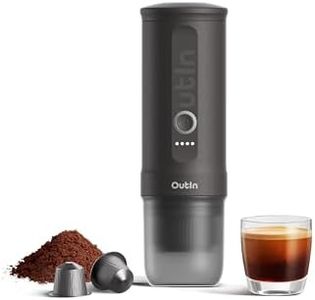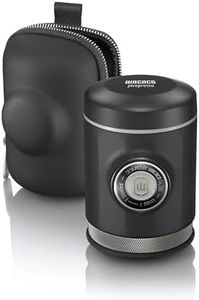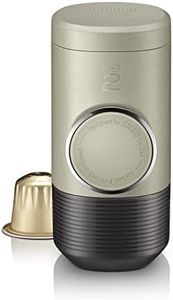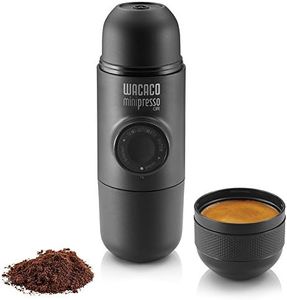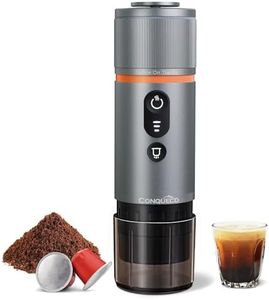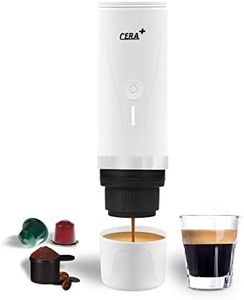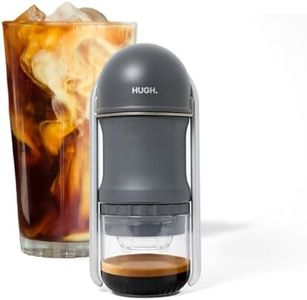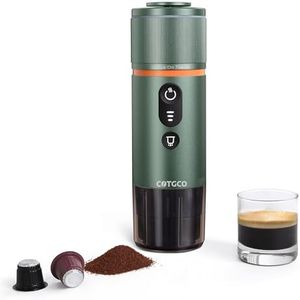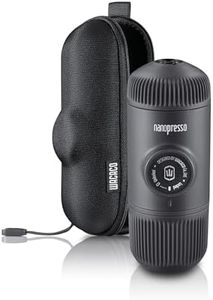We Use CookiesWe use cookies to enhance the security, performance,
functionality and for analytical and promotional activities. By continuing to browse this site you
are agreeing to our privacy policy
10 Best Portable Espresso Machines
From leading brands and best sellers available on the web.By clicking on a link to a third party's website, log data is shared with that third party.
Buying Guide for the Best Portable Espresso Machines
When choosing a portable espresso machine, it's important to consider where and how you'll use it. Ask yourself if you'll be making coffee while camping, traveling, or at work, and how much effort you're willing to put into the espresso-making process. Portable machines come in a range of shapes and styles, from manual pump models to battery-powered options. Understanding your preferences and daily habits will help you choose a machine that fits smoothly into your routine and delivers a satisfying espresso with minimal hassle.Power SourceThe power source refers to how the espresso machine operates—whether it’s manual (using hand pressure), electric (using batteries or a plug), or a hybrid. Manual options rely on your hand strength to create pressure, making them reliable anywhere but requiring physical effort. Electric and battery-powered machines automate the pressure, offering ease but depending on electricity, which may not always be available when traveling. Consider where you'll use your espresso maker: for hiking or remote trips, go manual; for office or hotel use, electric may be more convenient.
PressurePressure, measured in bars, determines how effectively the machine can extract flavor from the coffee grounds. A typical espresso is brewed at around 9 bars or more. Lower pressure machines may produce a coffee that's more like strong drip than true espresso, while higher pressure models deliver authentic crema and bold flavor. If you want classic espresso, look for a machine capable of at least 9 bars; for those who are less picky or just want strong coffee, lower pressures may suffice. Match the pressure rating to your taste preference.
Water CapacityWater capacity tells you how much espresso can be made in one go. Smaller tanks mean you may need to refill for every cup, which is fine for personal, occasional use. Larger tanks support multiple servings but make the unit bulkier. If you often brew for just yourself, a small capacity is sufficient and keeps things lightweight. If you share coffee or like back-to-back drinks, prioritize a larger reservoir.
Coffee Input TypePortable espresso machines may accept ground coffee, coffee pods (like Nespresso), or sometimes both. Using ground coffee gives you more control over taste and strength, but requires extra gear (like a grinder) and some cleanup. Pods offer speed, convenience, and less mess, but tie you to certain brands and limit customization. Think about whether you prioritize convenience or the ability to fine-tune your espresso; your choice will guide you toward the type that suits your lifestyle.
Ease of CleaningPortable espresso makers can gather residue inside, so cleaning is key for taste and hygiene. Some machines are simple to rinse out, while others have multiple pieces or hard-to-reach spots. If you want hassle-free cleaning, look for designs with fewer removable parts and broad openings. If you don’t mind a bit more work for better performance, a more complex machine could be worth it. Consider how often you’ll use it and where you'll be cleaning up—at home or in the wild.
Size and WeightSize and weight determine how easy it is to carry your espresso machine and where it fits in your luggage. Smaller, lighter models are ideal for hiking, backpacking, or travel with strict space limits. Larger units may offer more features or capacity but can be bulky in a bag. Think about your travel style and how much room you can dedicate to your coffee gear to guide your pick.
